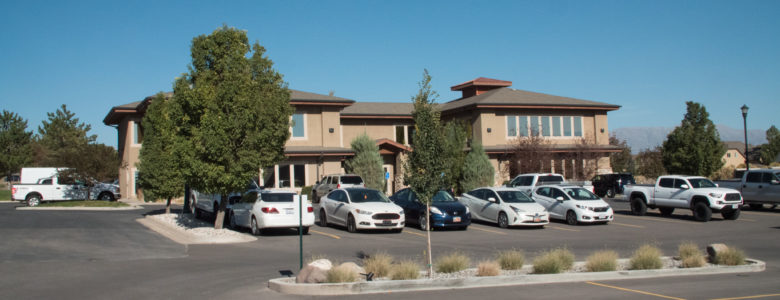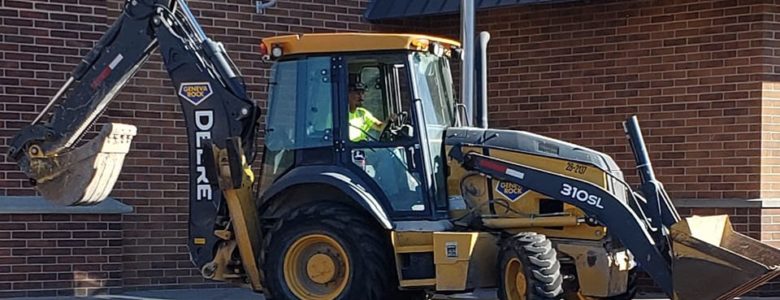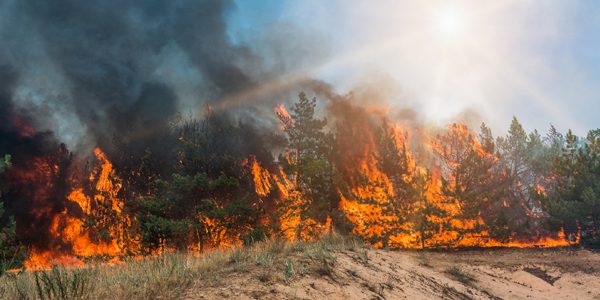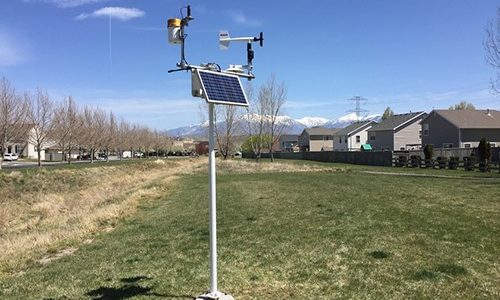Every day, Jim Barney tries to bring a positive attitude to work.
The Eagle Mountain City Neighborhood Improvement officer has been on the job since 2019 and has collected more than a few stories about helping Eagle Mountain neighborhoods stay well-maintained.
“We work with all of them,” says Barney while referencing the subdivisions Eagle Mountain City’s Neighborhood Improvement department works with closely.
Barney, turning the air-conditioning on full blast in his City-owned Ford pickup, sets about his daily task of following up on code-related complaints. First stop, he heads toward a particular section of City Center.
Eagle Mountain City responds to between 1,000 and 1,500 code issues every year. They result from a mix of resident submissions and issues the Neighborhood Improvement staff find while out and about on their daily duties.
“Typically, we do a courtesy notice just to show them what the code is,” says Barney. “We don’t hit them right away. We give them a letter and let it sit through the weekend and then come back to work and if it’s still in the same condition, that’s when we send out the notice and then a violation.”
It’s not an easy job.
Of the 966 residents that submitted feedback during the City’s 2022 Annual Resident Survey, 51% of respondents said they were very unsatisfied or somewhat unsatisfied with the Neighborhood Improvement department.
Barney says it can sometimes feel a little disheartening.
“Sometimes you think this is a thankless job,” says Barney. “I’m here to help people take care of their property. It’s a pretty important job once you start thinking about it.”
Still, Barney can point to several areas of Eagle Mountain where the effort to work with homeowners has paid dividends.
Arriving at his first destination, Barney points to the substantial improvements of the area.
“This is a continual work in progress,” Barney says.
Consistent follow up is key. The Neighborhood Improvement staff works through a software called iWorq. It allows them to track a case, refer to specific dates, make notes, add photos and set reminders for when to follow-up with a homeowner.
Many of the cases take considerable time to resolve. Parked outside a property, Barney scrolls down the page on the software showing all the follow-up that took place to return the property to code compliance.
“It’s not really high on their priority list sometimes. It depends on the situation,” says Barney while making a few turns to get to Skyline Ridge.
That doesn’t mean, however, that the Neighborhood Improvement department is not without its human side. Often, the staff makes every attempt to speak to the property owner in person to better understand what is preventing proper maintenance.
“Once we find out what their situation is, we try to work with that in mind,” says Barney.
He recalls several examples of residents facing cancer or another medical situation. He also referenced residents going through difficult times in their lives following the loss of a family member. These situations keep Neighborhood Improvement sensitive to individual needs.
While Eagle Mountain residents are generally responsive to Neighborhood Improvement violation notices, the reaction can also trend away from friendly.
“We don’t answer the phones anymore. We typically have folks leave a message,” says Barney.
Threats are a semi-regular occurrence and its something the Neighborhood Improvement officers try to keep in mind.
Getting out of his truck in Skyline Ridge, Barney attempts to contact a homeowner who had a letter relevant to Code enforcement returned to the City. This complaint has to do with weeds on the property. Many homeowners who have not completed the installation of their lawn or landscaping have been battling weeds since moving into their homes.
Parking, however, is what stands out to Barney. Where cars can be parked on City or residential streets is a recurring theme the Neighborhood Improvement department addresses – going as far as to write several submissions to the City newsletter to address the matter in detail.
“Often people think they own the road in front of their house, and they don’t,” says Barney.
No success was found contacting the homeowner, meaning future attempts will need to be made to address the code issue at hand.
Returning to his truck, Barney sets off to visit yet another section of the city.
While it’s often seen as an inconvenience to formally handle a code-related issue, the purpose of Neighborhood Improvement is to maintain the appearance of the community.
“We’re trying to work with the HOAs more,” says Barney when referencing how the City is trying to take a proactive approach to code enforcement.
Season-to-season, the department’s focus changes.
As Barney’s truck rolls up to another section of Eagle Mountain, he exits the truck once again because a trailer has been parked in the street beyond the allotted time outlined in City Code.
“In the fall when it’s hunting season, we’ll typically try to be more lenient with trailers but we keep checking on them,” says Barney.
This trail, however, doesn’t fit the bill for leniency. Placing a notice on the window of the truck and trailer, Barney fills out the relevant information.
Eagle Mountain City Code can sometimes require training to understand. This is something the Neighborhood Improvement regularly works to clarify and seek updated information.
If a matter goes unresolved, the code violation is submitted to the Administrative Law Judge for review. This has cleaned up confusion and has made the process more efficient in Eagle Mountain since its implementation in recent years.
While enforcement of code-related issues will continue, Barney says residents have become more responsive.
“The best place to submit a complaint is the Resident Portal, really,” says Barney.
Eagle Mountain residents are encouraged to learn more about City Code by visiting the City’s website.
Returning to City Hall, Barney says he’s doing this work for the right reasons. Improving neighborhoods and holding property owners accountable for the maintenance of their property is a point of pride for the department.
Taking a proactive approach, however, brings Barney the positivity he craves every day.











